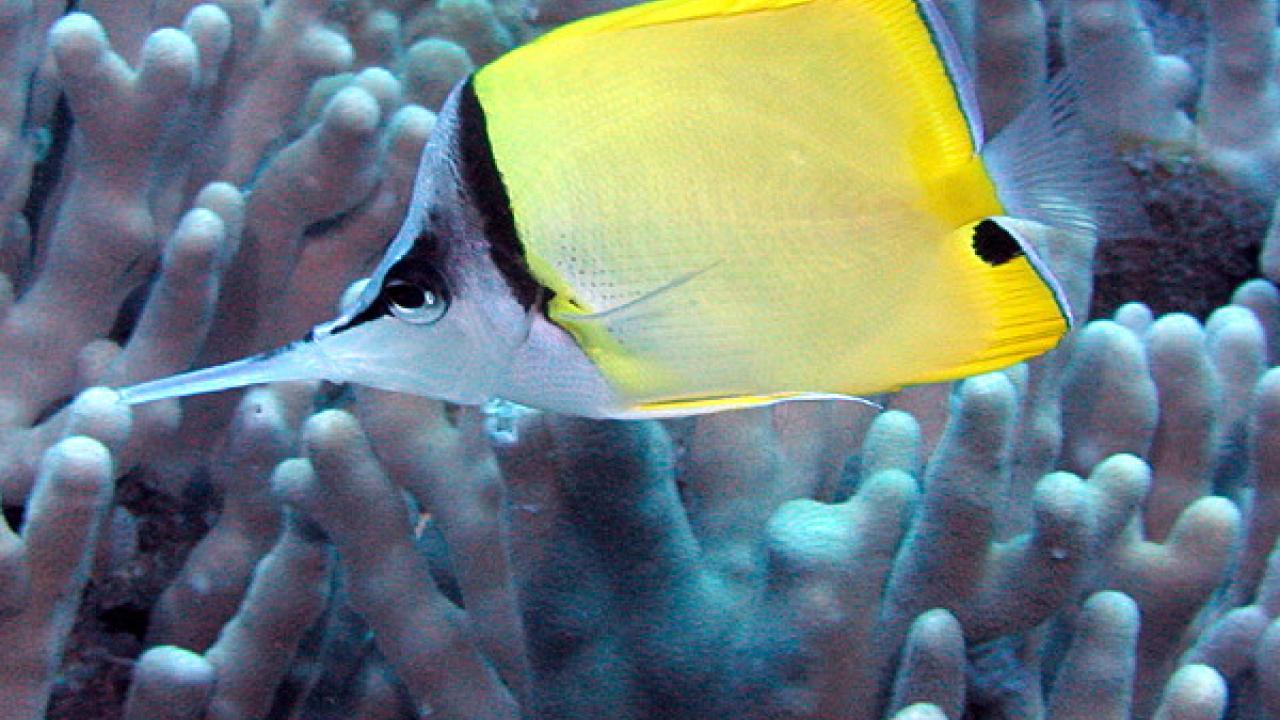
Defend Against Predators or Run? Evolutionary Tradeoffs in Butterflyfish
Quick Summary
- Researchers measured the physical traits and defenses of 351 butterfly fish species compared to feeding style
- The fish fell into two broad groups: hunters and grazers
- Hunters, with deeper bodies and bigger spines, left the reefs; grazers remained in the relative safety of the reefs
How does a fish avoid being eaten by a bigger fish? Evolution could build up defenses such as spines or armor, or favor avoidance strategies such as quick reactions, swimming away and hiding. The rules of evolution are tough, so you cannot really have both, the argument goes.
But this hypothesis has been difficult to test in practice. Now Jennifer Hodge, a postdoctoral researcher working with Professor Peter Wainwright and colleagues in the UC Davis Department of Evolution and Ecology, College of Biological Sciences, has carried out a survey of hundreds of species of butterflyfish, carefully measuring their physical traits and defenses compared to feeding style.
The results support the notion of a tradeoff between physical defense and predator avoidance but also point to the importance of coral reefs for these fish.
Butterflyfish as grazers or hunters
The butterflyfishes are a large and colorful group that includes both species that graze on coral reefs and fish that hunt for prey along the ocean bottom.
Hodge examined preserved specimens of 351 species of butterfly fish from the Smithsonian National Museum of Natural History, the Field Museum of Natural History and the California Academy of Sciences as well as from Wainwright’s personal collection. She measured body size and spine length, fin size and shape, eye size and other factors.
The fish fell into two broad groups, she found. Hunters, which venture away from reefs, tended to have deeper bodies and bigger spines, making them harder to swallow. They also had bigger eyes both to watch for predators and to see their own prey.
“We found that hunters do have longer spines that they rely on to defend themselves, which supports our predictions based on the assumption that hunters experience greater risk of predation,” Hodge said.
Grazers were less spiny with smaller eyes, but their fin shape suggesting that they could maneuver and accelerate rapidly, allowing them to dart into hiding places in the coral when threatened. Long spines could be disadvantageous for fish feeding on coral because they could snag or otherwise get in the way.
Coral reefs are the habitat in which these fish have evolved. They provide food and refuge from predators. The new study highlights how living on coral has influenced the evolution of body shape in these animals, Hodge said. As reefs are damaged by climate change, fish that rely on them for protection may be more vulnerable to predators as well as losing their food sources.
The study was published in the journal Ecology Letters. Additional coauthors are Chidera Alim, Nick Bertrand, Wesley Lee and Binh Tran, all at UC Davis and Samantha Price, now at Clemson University. Funding support was provided by the National Science Foundation.
Media Resources
- Read the paper in Ecology Letters
- This story first appeared on the UC Davis Egghead blog
